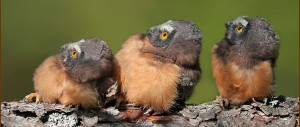 I was planning to do a bit of research on this subject and then found that someone else had already done it. It seems that climate sceptic Tory MPs tend to be euro-sceptics too. This doesn’t mean that they don’t believe that the EU exists – at least I don’t think it does.
I was planning to do a bit of research on this subject and then found that someone else had already done it. It seems that climate sceptic Tory MPs tend to be euro-sceptics too. This doesn’t mean that they don’t believe that the EU exists – at least I don’t think it does.- I don’t know whether this report of an eagle owl came to anything but if so it is a very interesting sighting considering the status of this species.
- I was in the Guardian’s relatively new office near Kings Cross on Wednesday and as I left a grey wagtail flew over calling.
- The Barn Owl Trust has a poetry competition.
- On Wednesday evening I had a lovely time at the Mall Galleries with the BTO and the Society of Wildlife Artists – not enough time to talk to everyone I would have liked to and not enough money to buy all the art I would liked. But I saw Mike McCarthy pick up yet another award – the Dylis Breeze Medal.
- I think of October as a skylark month – they are moving around and you often hear them flying over, even in the middle of towns.
- Apparently the NFU don’t like the CAP proposals – let’s have a referendum on them and see what happens then.
- My trips to London are usually by train from Wellingborough station (where there were fieldfares in the adjacent field on Wednesday) and the best bird spot of the journey is usually just south of Luton Parkway Station where red kites and buzzards are now very regular sightings.
- On a personal note, people keep telling me how well I look, and that the freelance life must be suiting me, which might be because they are lying but might be because I looked rubbish before!
- I am still seeing the occasional red admiral in the countryside and in my garden – will they last into November I wonder.
- And if you have an image anywhere near as good as these saw-whet owlets then the Cornell Lab of Ornithology and the Natural Resources Defense Council would love you to enter in their Welovebirds photo competition.
8 Replies to “Bits and pieces”
Comments are closed.
On Thursday evening I had a lovely time at the Mall Galleries with the RSPB and the Society of Wildlife Artists – not enough time to talk to everyone I would have liked to and definitely no money to buy the art. I did find the Conservation Director a pleasure to talk to but will admit that was the same with the last one.
Bob – like it!
On question B! This sighting co-insided with Britain’s largest invasion since the II World war of Short eared Owls. Titchwell itself saw 50 birds fall in from the sea on one day and records were broken up and down the east and south coast. The bird in question was chased inland but could not be found again. With so many Short eared Owls coming ashore, why would any one chase a possible Short eared Owl in land! This invasion also has many Hen Harriers, Rough legged Buzzards and presumably later, Snowy Owls and Hawk Owls as Scandinavia and Russia has seen the largest Lemming year in 50 years. So I presume Eagle Owls have also had an amazing breeding season as well! But don’t worry most of these birds will be shot once they get onto Red Grouse Moors.
John – yes it’s very interesting iosn’t it?
On C, I find it somehow comforting to know that at least some Grey Wags are Guardian readers. They’re also now very numerous in urban settings – and for example they’re year-round regulars on the rooftops of Cardiff University or the National Museum from which they flit to and from the nearby Taff-feeder channel. I have a student hoping to appraise their distribution throughout Cardiff this winter – mostly along the river network. I wonder which other UK cities of comparable size provide the possibility to see dippers, kingfishers and grey wags with such reasonable regularity? Urban rivers are still some of Britian’s grubbiest – but also they’re some of our most improved over the last 20 years.
Steve – welcome and that’s an interesting point , thanks.
The discussion on proportions re CAP is very interesting – the assumption loss of production will be directly proportional to loss of area as Dennis points out is wrong – whilst from the 80s onwards we’ve seen wildlife squeezed harder and harder as the last tiny percentage of more natural land was halved then halved again – involving maybe as little as 2-3% of the most productive land.
But perhaps the really big question is what you might get if you deployed 7% or maybe even half that as less intensively managed land on a landscape, not farm holding scale, led by a range of key outcomes including flooding, biodiversity, carbon and quality of life. For example, 30,000 ha of woodland were planted in c 7 years under the RDPE, all in areas less than 30 hectares – just 1/3rd of that area concentrated in one place would have produced a forest the size of the Forest of Dean and by 2050, planted around our biggest cities, we could completely transformed the accessible countryside for our 5 biggest urban areas.
Roderick- good point thank you!